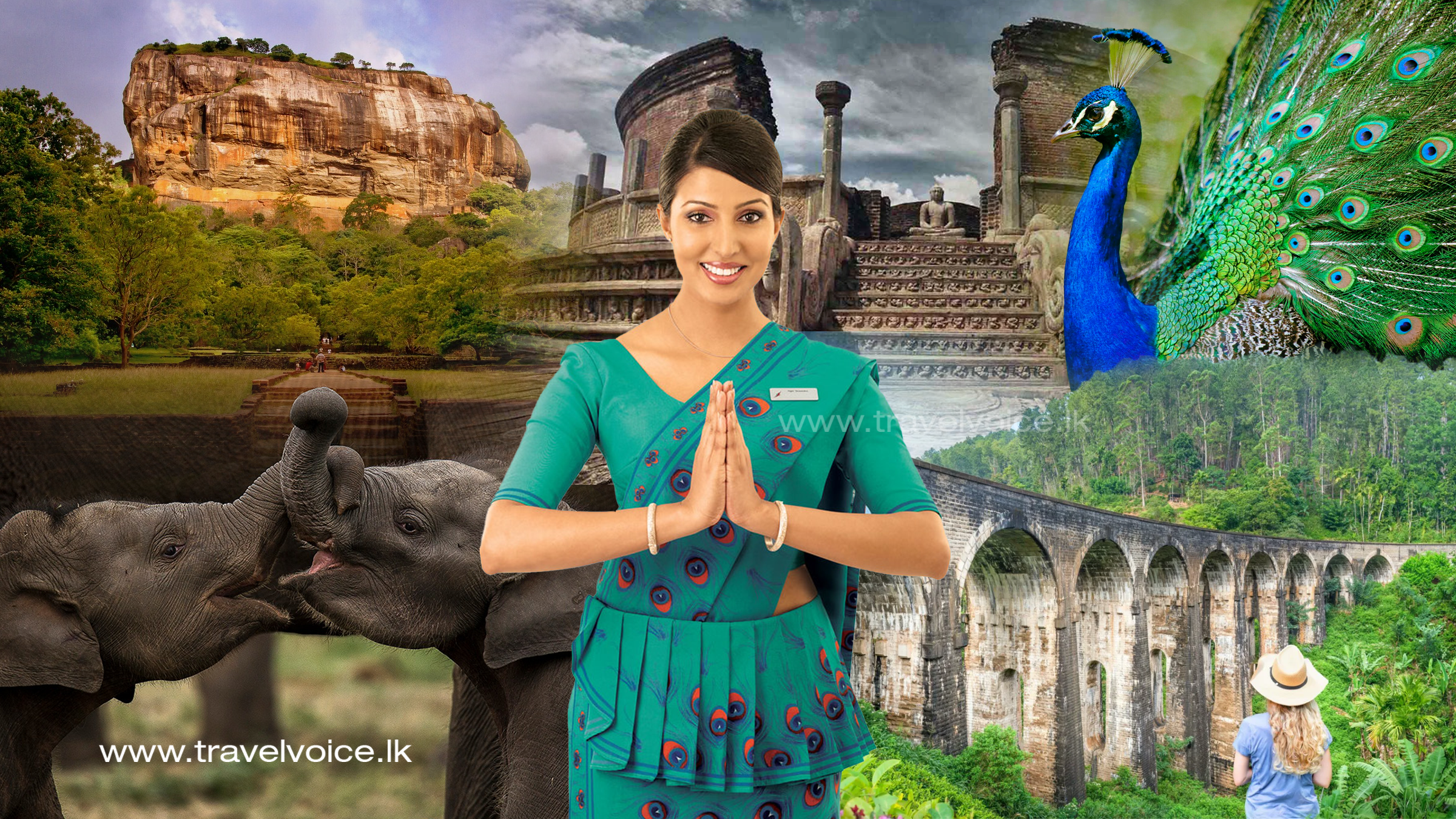It is an incredibly resilient nation too, and as you circumnavigate this enigmatic Indian Ocean island, meeting kind-hearted locals genuinely interested in making your acquaintance, it’s easy to forget everything the island has gone through in the recent past.
Confidence in Sri Lanka as a destination is reflected in the ever-increasing visitor numbers – 2024 saw more than two million arrivals, a little shy of 2018’s 2.3 million peak, yet up a hefty 38 per cent on 2023.
The island is best explored circuitously to take in each diverse region. You can fly between some destinations on domestic carrier Cinnamon Air, but you will absorb much more when travelling by road.
The scenery changes often: rippling emerald paddy fields, ornate temples and Buddha statues turn to manicured tea gardens, steamy rainforests, cinnamon plantations, colonial-era fortresses and nature reserves quivering with leopards, elephants and acrobatic monkeys.
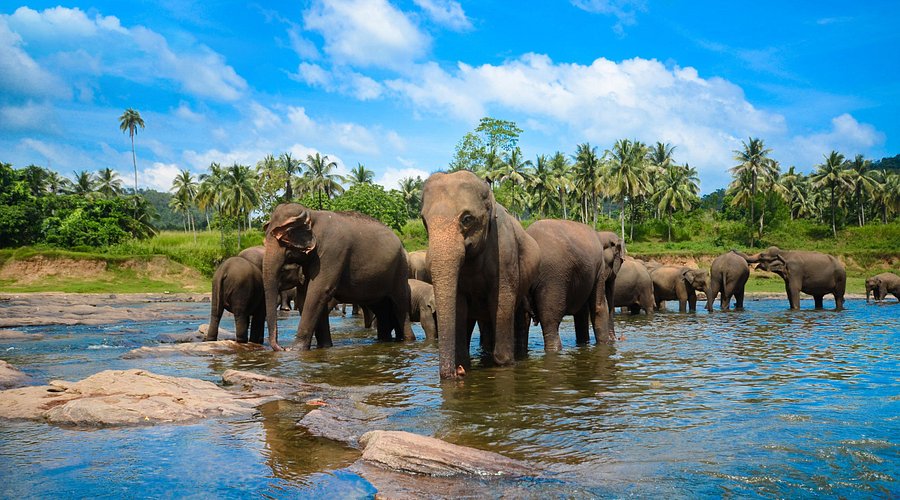
And then there’s the country’s idyllic 830-mile coastline with its rocky coves and soft-sand beaches – playgrounds for the flourishing south and east coast surfing communities – while blue whales, dolphins and turtles inhabit the warm, turquoise sea.
The easiest way to tour this itinerary is to hire a driver or chauffeur guide (ask your tour operator to help with arrangements), though if you’re staying longer in one place, you can rely on taxis or three-wheeled metered tuk-tuks. It would take a month or more to cover the whole island, so if you’re coming for two weeks or less, resist the urge to rush. Instead, pick out three to four main destinations and explore them slowly – our 14-day itinerary introduces you to the island’s best-loved sights.
Day 1
Kotugoda
A sublime start
Direct flights to Colombo from London on Sri Lankan Airlines arrive at lunchtime, so catch your post-flight breath by staying close to Colombo’s Bandaranaike Airport for your first night. Wallawwa is just a 15-minute drive away, and this 19th-century, 18-bedroom revamped manor house with spacious garden suites, a serene spa and a foliage-fringed pool was once a refuge for the Royal Air Force during the Second World War.
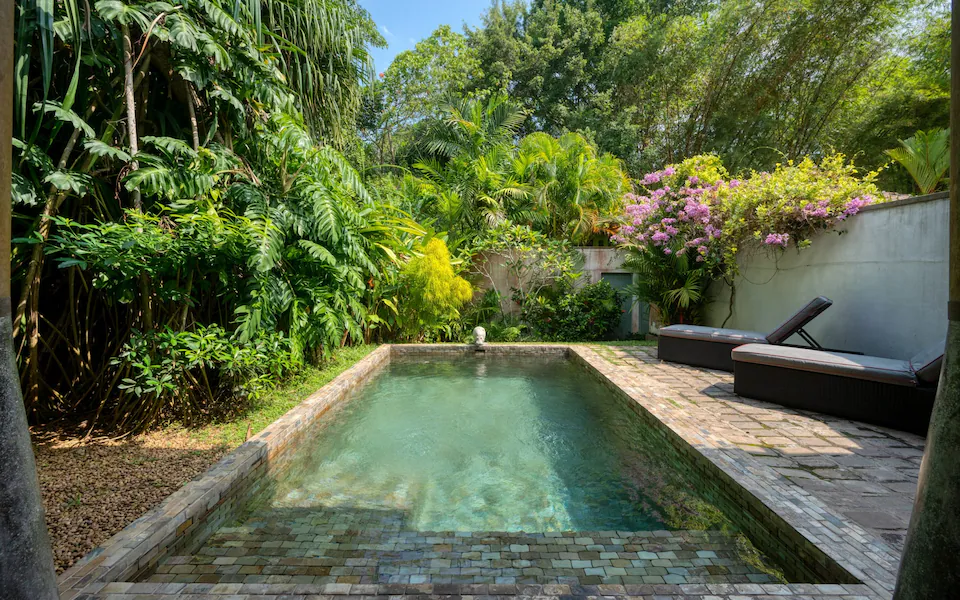
Day 2
Thirippane
Check into Ulagalla
It takes four hours to drive to Uga Ulagalla, located in the northernmost tip of Sri Lanka’s “Cultural Triangle”, a repository of treasured cultural relics including four World Heritage Sites. This idyllic boutique hotel carved out of a former manor house has 20 free-standing pool villas facing tangled woodland and rice fields. There are bicycles and self-guided trails, kayaks for exploring the lake, Sri Lankan cookery classes, horses to ride, and you can even help with the rice harvest (in March).
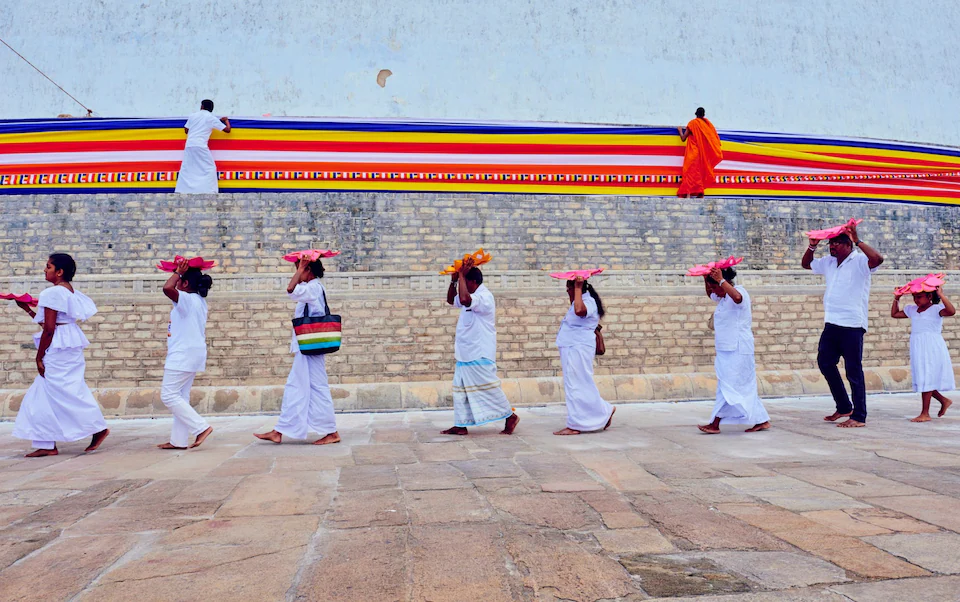
After settling in, hop into the hotel’s jeep for a late afternoon drive to Nachchaduwa. This journey through the remote rural countryside takes you along bumpy earthen roads slicing through oceans of paddy fields and diminutive villages to a hidden-away reservoir, where you are served drinks and snacks as the sun dips out of view. You may see elephants, but just sitting and absorbing this tranquillity is enough.
Day 3
Anuradhapura
Cultural cities
Ask your driver to take you to Anuradhapura, the oldest of Sri Lanka’s two ancient capitals, which is 45 minutes away from Ulagalla. This 2,500-year-old archaeological repository of colossal dagobas, ruined temples and monasteries, and an ancient bo tree (possibly the world’s oldest historically documented living tree) is staggering. Sites are spread out, so consider taking a guided bicycle tour.
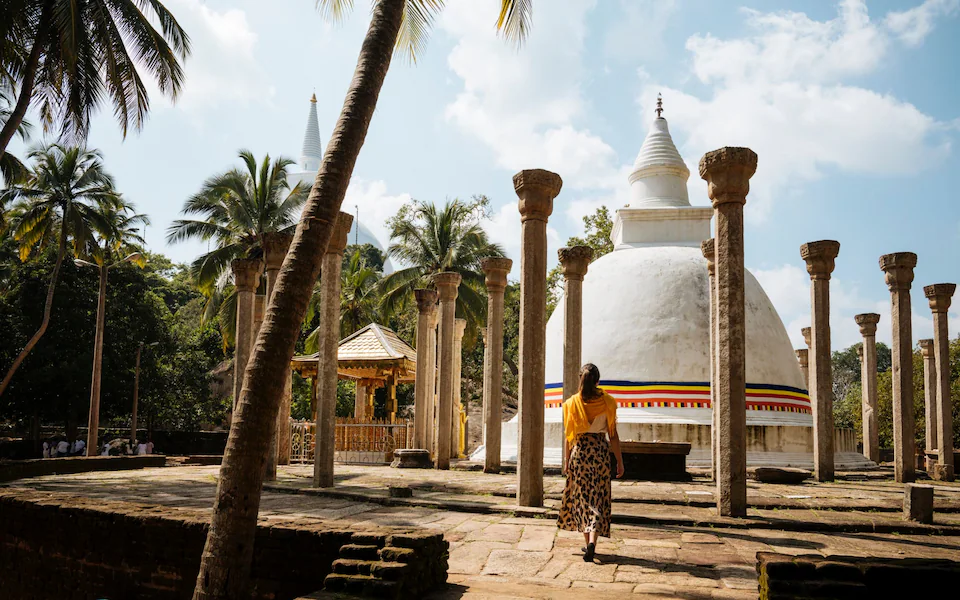
Afterwards, move on to Mihintale (30 minutes drive) where Sinhalese King Devanampiya Tissa is believed to have converted to Buddhism (and in turn, established Sri Lankan Buddhism) in 247 BC. Hike up the 1,840 or so steps to the two ruined dagobas at Mihintale’s summit, pausing to view Brahmi rock inscriptions and grass-tufted Kantaka Chetiya’s ornate statues. Return to Ulagalla for dinner at lamp-lit Kamatha, a rustic restaurant amid paddy fields, for an awesome multi-curry feast cooked over open fire.
Day 4
Sigiriya
Lion Rock
From Ulagalla, it’s just over an hour’s drive to Sigiriya, a towering, flat-topped rock with near-vertical sides that’s another World Heritage Site – get there early to avoid the heat (and crowds). Despite being a short-lived royal capital (from AD 477 to 495), it’s impressively indulgent.

Day 5
Dambulla
Sacred caves
Depart Ulagalla and visit Dambulla’s five spectacular 2,000-year-old cave temples en route to Kandy. Occupying a small granite hill guarded by a vast Golden Buddha, each astonishing cavern (Cave 2 is enormous) exhibits a unique collection of ornate Buddhist statues and shrines beneath still-vibrant murals. Like all temples in Sri Lanka, you should remove your shoes at the entrance (there are cubby holes to store them) and walk around barefoot (or take a pair of socks).
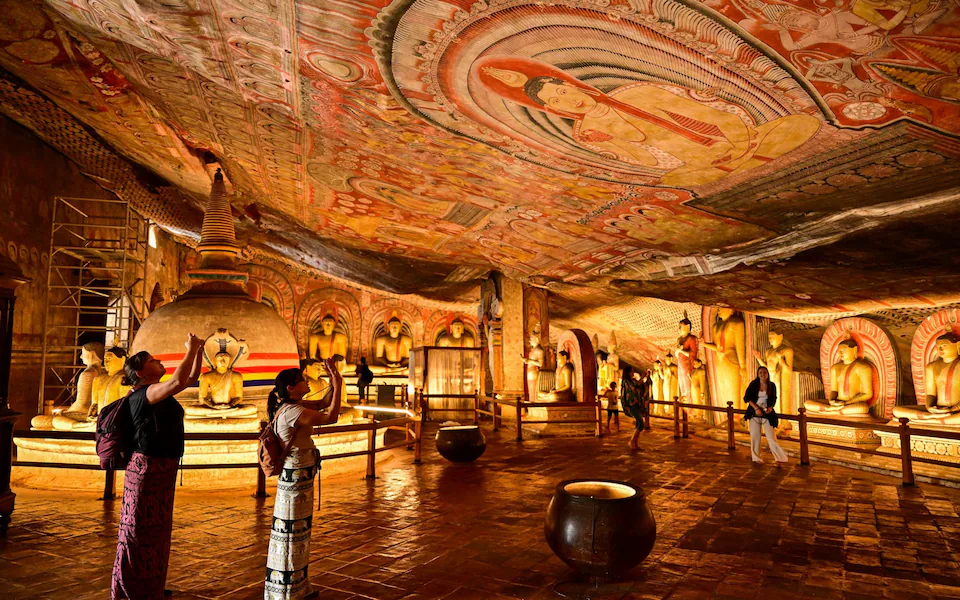
Cultural capital Kandy is a city prone to congestion, so avoid the gridlock by staying 25 minutes away at W15, a charming bungalow-turned-hotel in hilltop Hanthane with magnificent easterly views towards the rugged Knuckles Range. Or consider down-to-earth Ellerton Bungalow, 40 minutes to the south-east of town, whose friendly owners organise scenic picnics, river swims, a tea factory tour and blessings at a local temple devoted to Kataragama.
Day 6
Kandy
Cultural Kandy
Kandy, Sri Lanka’s second-largest city, is famous for its unique art, dance and architecture. Beside the city’s centrepiece lake stands the gilt-roofed Sri Dalada Maligawa – the island’s holiest Buddhist shrine – which famously safeguards a tooth of the Buddha. Its significance warrants a visit, especially during the lively 6.30pm pooja (offering) ceremony. The trio of older out-of-town temples – Lankatilaka, Embekke and Gadaladeniya – famous for stone carvings and Hindu and Buddhist imagery, yet far fewer tourists – are also worth your time.
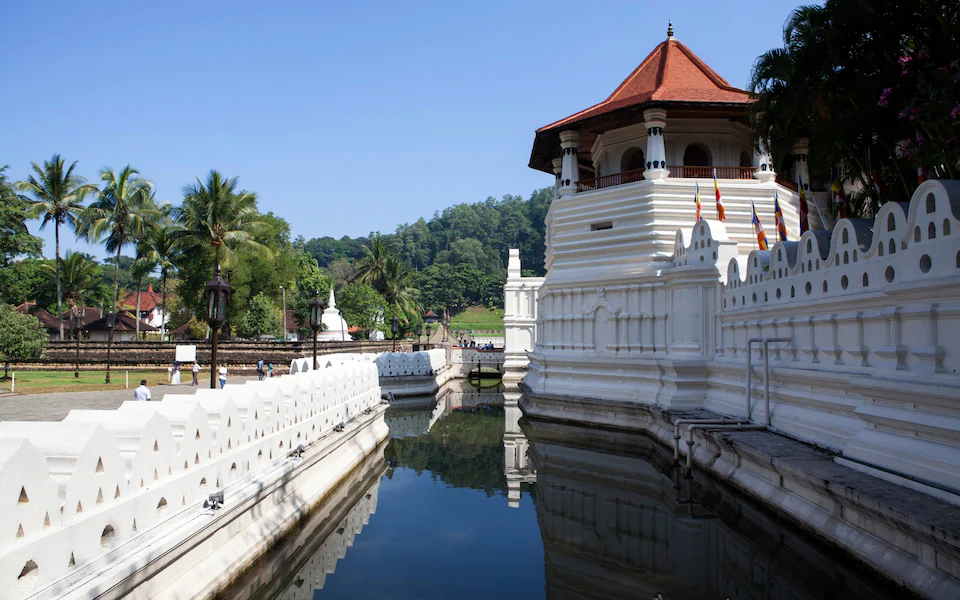
Day 7 & 8
Haputale
Tea Country by train
The Hill Country’s verdant tapestry of mist-cloaked hills, pine forests, neatly tended tea estates, tin-roofed villages and terraced vegetable gardens is best navigated by train. Ask your driver to drop you at Gampola, an hour from Kandy, and travel to Haputale (beyond which the line extends via Ella to Badulla), where your driver will be waiting to pick you up. The journey time is around four and a half hours, so pack supplies. To secure a reserved seat, enlist your travel agent or a local ticket agency, as they are notoriously tricky to source.
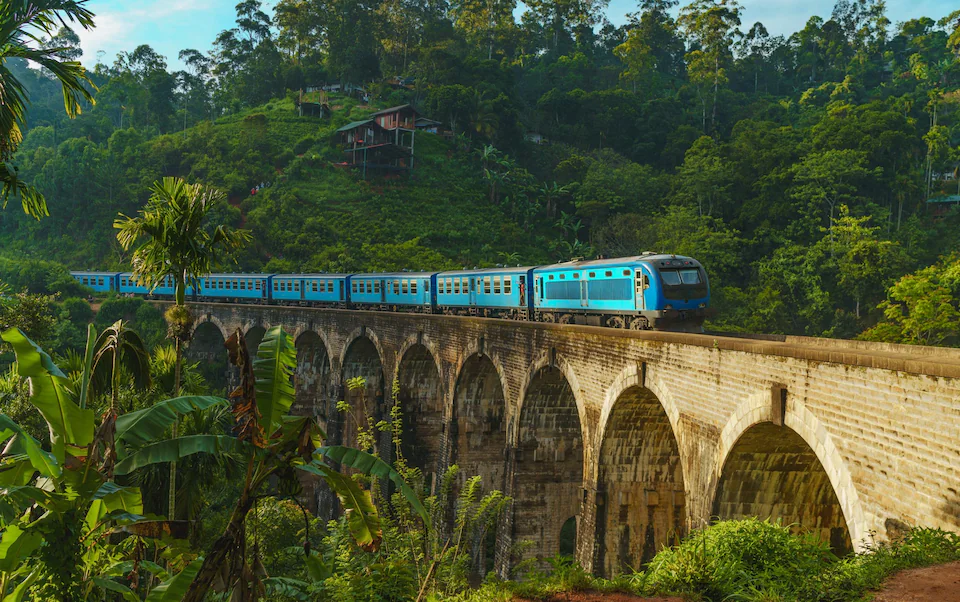
The story of Sri Lankan tea is shaped by characters such as the Scottish tea planter Sir Thomas Lipton, who made his home in Haputale, a small view-blessed town on the edge of a steep escarpment. Swaths of emerald tea bushes surround the town and form part of the Dambatenne Estate, which Lipton established in 1890.
Savour this setting from Thotalagala, an evocatively restored seven-bedroom Edwardian tea bungalow hotel with sensational views over the southern plains. The hotel can arrange a delectable afternoon tea in the garden and guided tours of the atmospheric Dambatenne tea factory, a 20-minute drive away.
Hiking the hills
Get a feel for the Tea Country via the Pekoe Trail, a 186-mile, 22-stage trek, which reveals rarely seen tea plantations, viewpoints, forests and valleys, and generates a much-needed revenue stream for local communities.
Haputale is the gateway to two particularly scenic walks. Stage 12 travels through the little-known Udaweriya Valley, passing abandoned villages, pine forests, tea fields, the Thangamale Bird Sanctuary, and finally, Adisham Bungalow – a Franciscan monastery, which sells homemade jam. Stage 13 starts in Haputale and winds through the Thotalagala-Dambatenne Valley towards distant Lipton’s Seat, where Lipton used to sit and survey his emerald empire. Each trail is marked so they can be done self-guided via the Pekoe Trail app, though a local guide will offer more cultural insights – and ensure you don’t get lost (contact the Pekoe Trail for guide recommendations). Trail passes cost £7.70.
Day 9
Yala National Park
The leopard trail
The next part of your journey takes you to Yala National Park, a three-hour drive south of Haputale. This is Sri Lanka’s foremost nature reserve and one of the best places on earth to see elusive leopards in their natural habitat. Sleep under canvas (albeit, large en-suite tented rooms) at Leopard Safaris (request a safari with owner Noel Rodrigo, an expert on the animals) or Leopard Trails (which has another site in Wilpattu National Park). Both camps are close to Yala’s less-busy Katagamuwa entrance. Their expert naturalists use the quieter backtracks of the reserve to avoid Yala’s notorious crowds.
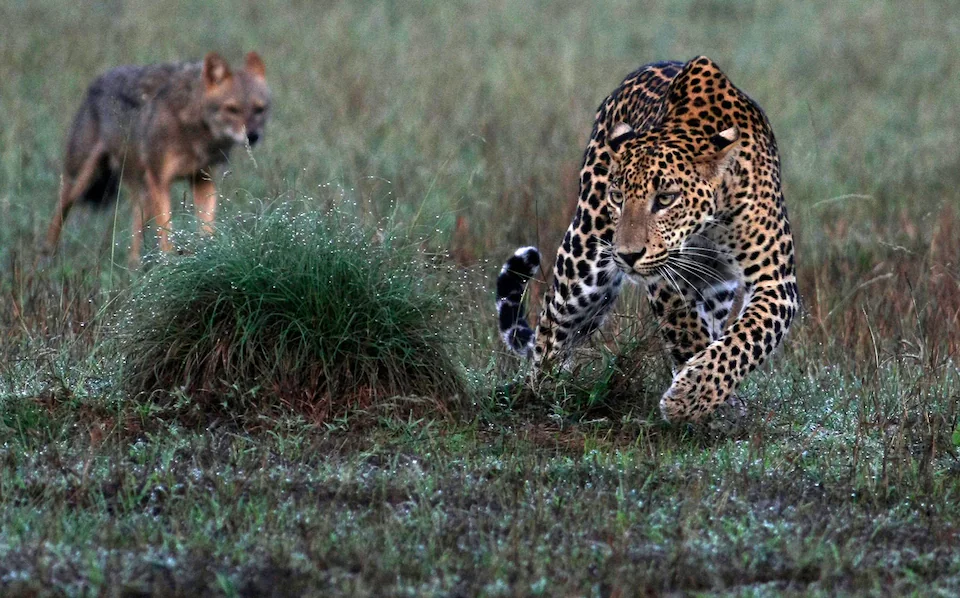
Safaris generally take place in the early morning and late afternoon, so expect to leave around 5.30am and 2.30pm. The reserve is made up of five blocks (block 1 being the most popular), and where you visit will depend on the seasons and time of year. Wildlife is ever present year-round, though May and June are good months for seeing sloth bears drowsily feasting on the mildly intoxicating fruits of the palu tree (Ceylon Ironwood), while the parched, dieback of vegetation in summer makes leopards (and other wildlife) easier to spot. It can be quite rainy in December.
Day 10 & 11
Galle
South coast splendour
From Yala, move on by car to Galle. Sri Lanka’s southern coast is a repository of milk-sand beaches, secluded coves and earthy red headlands. Each has its own flavour, and a varied selection of eating and drinking spots. Standouts include sleepy palm-fringed Mawella’s barely developed bay, the surfing beaches of Ahangama, Midigama and Weligama, and Talpe on the Galle “Riviera,” where large ocean-facing villas such as Skye House (sleeps 14) and the Tanamera Estate (sleeps seven) attract families and multi-generational groups.
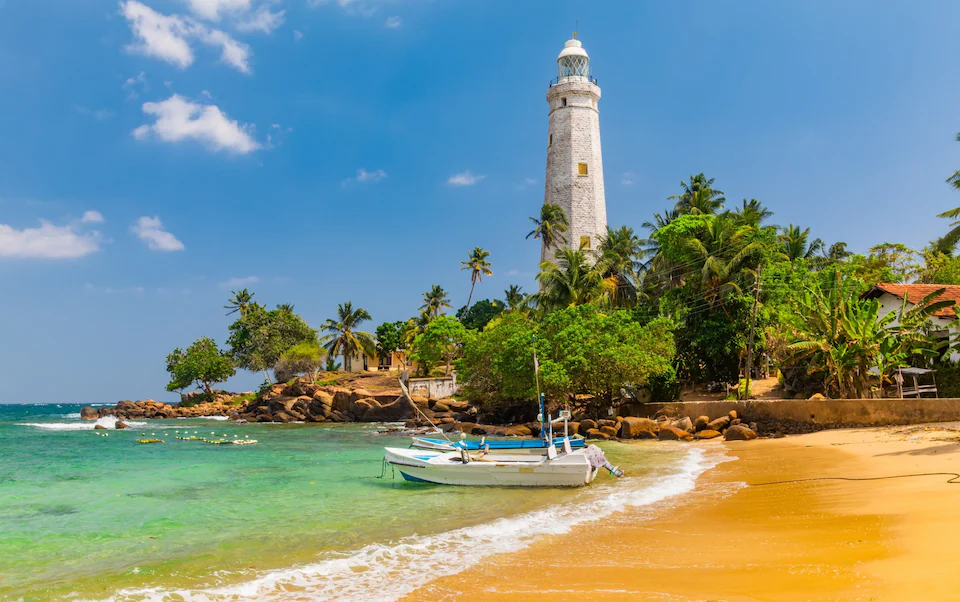
Staying within easy reach of Galle allows you to explore its rampart-walled old town and surrounding hinterland. There are some great inland options offering tranquillity and a taste of local life. Couples love Kahanda Kanda’s 12 individually designed villas (many with pools), which form part of a private tea estate near Koggala Lake. Why House, a charming country house hotel closer to Galle, is heaven for families. Both offer free tuk-tuks to local beaches. However, if an ocean view is an absolute must, book into Cape Weligama, one of three Relais & Chateaux properties in Sri Lanka. Its expansive maritime-themed villas, two pools, lookouts and restaurants survey the deep blue (and the occasional whale’s tail).
Sea-washed fortress
Wake up to a guided two-wheeled adventure with Idle Bikes. Choose from a 7½-mile family-friendly circuit that weaves through paddy fields, secluded palm-fringed villages and the Eluvila Bird Sanctuary, or the more challenging 25-mile Hiyare Lake Climb.
The late afternoon (or early morning) is the best time to explore Galle Fort, a 17th-century Unesco World Heritage Site, which can be reached by tuk-tuk. Flavoured by the architecture of the Dutch and Portuguese, this 130-acre lime and coral-walled fortress can be navigated independently or, better still, with charismatic archaeologist and tour guide Tharanga. Learning how to make hoppers, biriyani and fragrant curries in the home of Shahira Mahuroof of Ceylon Soul is another way to uncover the secrets of Galle.
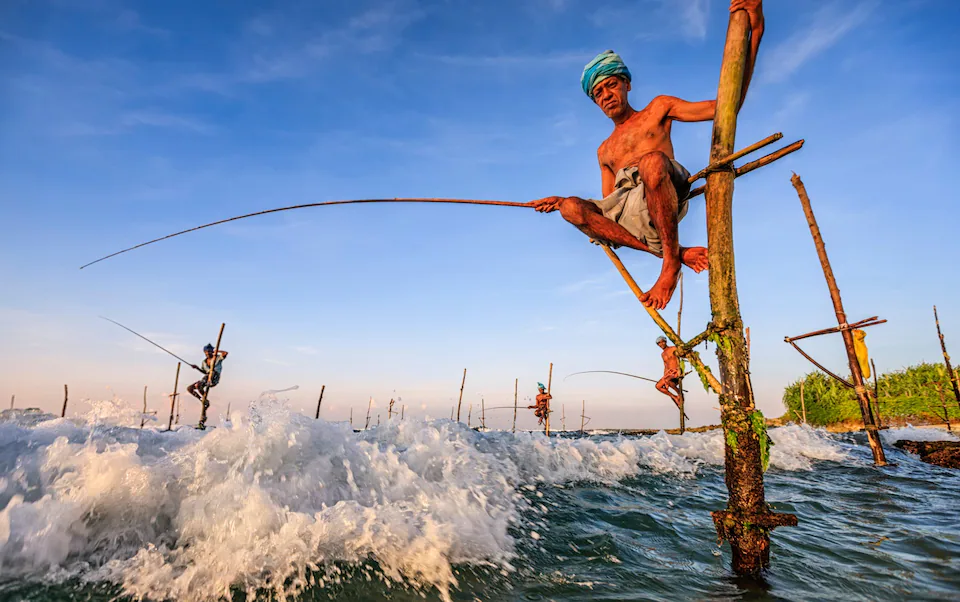
Later on, circuit the grassy sea-splashed ramparts to the ocean-view terrace of Charlie’s Bar for chilled sundowners followed by dinner at buzzy Fort Bazaar (also a great place to base yourself if you’d prefer to stay within these historic walls).
Day 12
Mirissa
Giants of the sea
Sri Lanka is a leading place to see blue whales without having to head too far from shore, and your chances of sighting sperm whales and vast pods of acrobatic spinner dolphins on the same trip are very high too. Mirissa, 50 minutes’ drive from Galle or 15 minutes’ drive from Weligama, is one of three regions in Sri Lanka known for whale sightings (the others are north-westerly Kalpitiya and north-easterly Trincomalee), and the season runs from November to April.
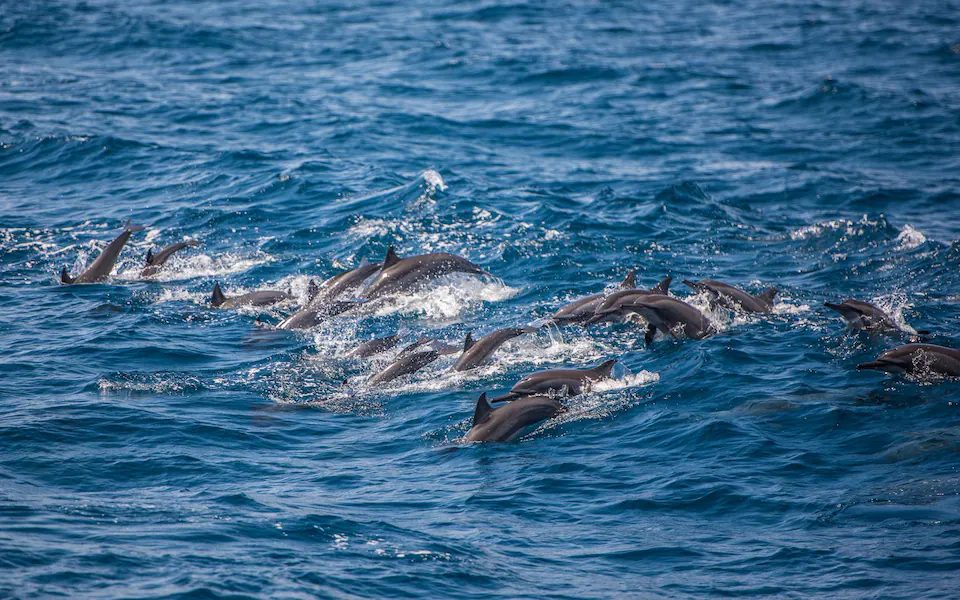
The number of boat operators is ever increasing, so do your research and be sensible when selecting a trip – and never buy from touts. Responsible operator Sail Lanka uses comfortably uncrowded Ceycat catamarans for its seven-hour cruises.
Day 13 & 14
Colombo
Contrasting capital
It takes a couple of hours to drive north to Colombo, Sri Lanka’s ever-evolving capital city, for your final night. Here, crumbling colonial-era homes sit in the shadow of shiny high rises, and a modern city is slowly emerging from reclaimed land just north of the sea-facing Galle Face Green. Some of Sri Lanka’s best restaurants are here – Gini for live fire cooking and Ministry of Crab for cleverly cooked crustaceans.
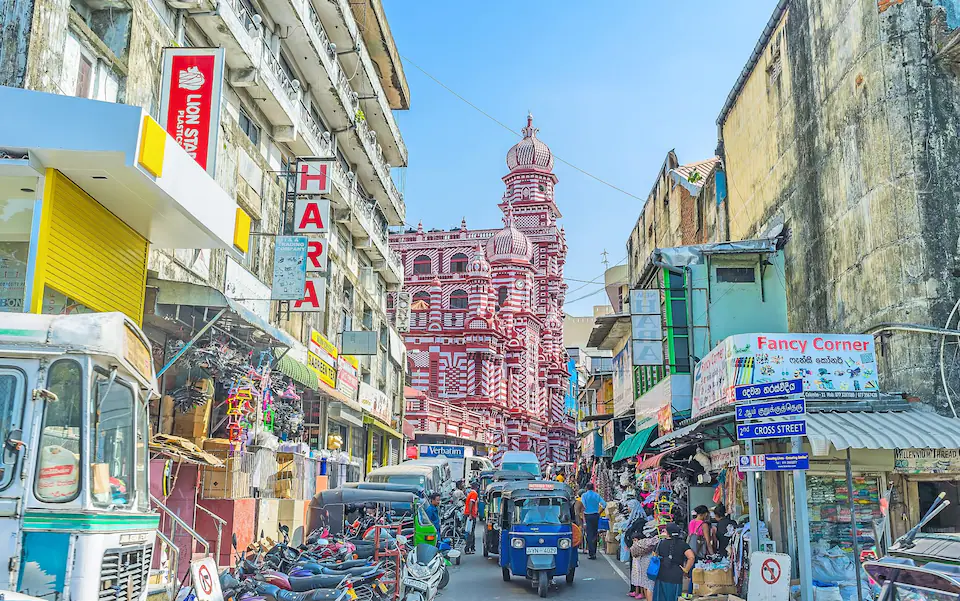
There’s no obvious centre, and sights are scattered, so make Ishq Colombo in Bambalapitiya your base. This exquisite family-home-turned-boutique-hotel has four rooms, a pool and decadent timber-framed living areas. It’s close to Number 11, the former home of Sri Lanka’s legendary architect Geoffrey Bawa, which is now a small museum, and the Gallery Café, Bawa’s former office, where you can feast on mustard modha fillet followed by jaggery (palm sugar) sundae as a final hurrah.


